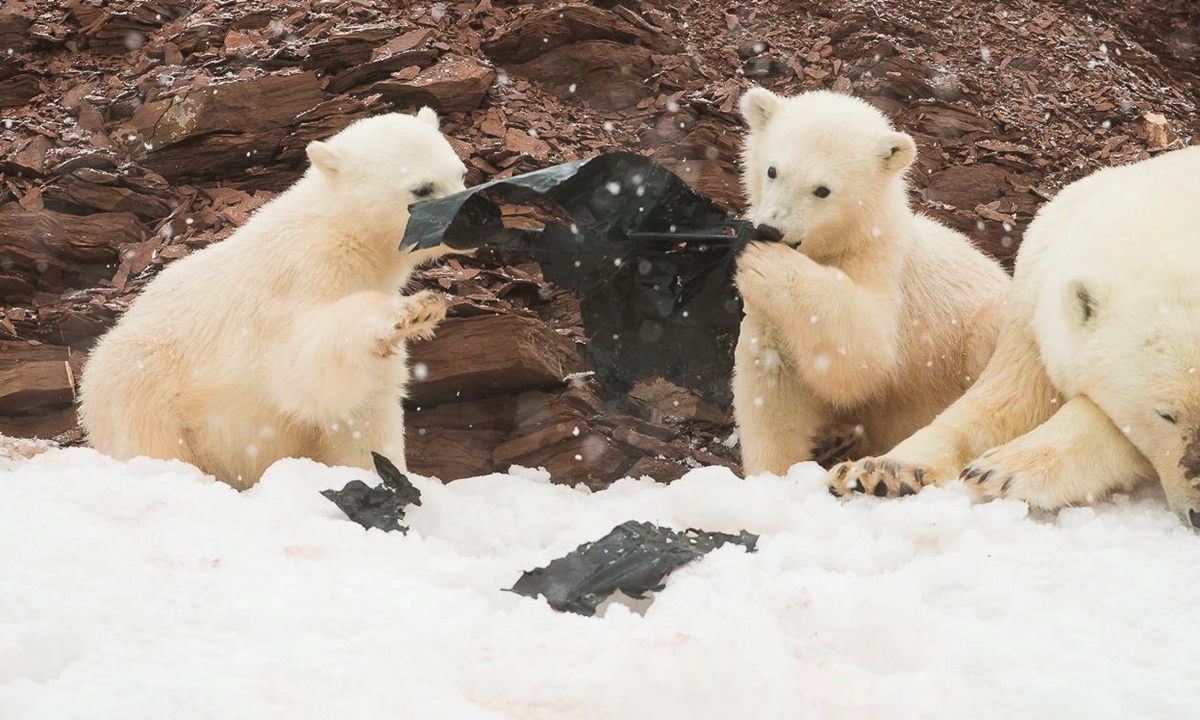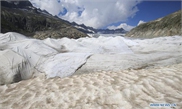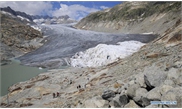1.5 C cap could ‘halve’ sea level rise from melting ice: study
Simulations a warning for world
Limiting global warming to 1.5 C could halve how much sea levels rise due to melting ice sheets this century, according to a major new study modeling how Earth's frozen spaces will respond to ever-increasing greenhouse gas emissions.

An international team of more than 50 climate scientists combined hundreds of melt simulations of the Antarctica and Greenland ice sheets, which contain enough frozen water to raise the world's seas some 65 meters.
They also included melt modeling from Earth's more than 220,000 glaciers, which make up only 1 percent of ice on the planet but contribute as much as a fifth of sea level rise.
The team analyzed the models to come up with probability estimates of how much melting ice would raise oceans under a variety of emissions pathways.
They found that if mankind successfully limits warming to 1.5 C - the goal set down in the Paris climate deal - it could halve ice's contribution to sea level rise by 2100. This is compared with the roughly 3 C of warming Earth would undergo if countries' current emissions-cutting pledges played out.
"Global sea level is going to continue to rise," said lead study author Tamsin Edwards, from King's College London's department of geography.
"But we could halve that contribution from ice melting if we limit warming to 1.5 C degrees, relative to current pledges."
The study, published in the journal Nature, found that the average contribution to sea level rise from melting ice at 1.5 C was 13 centimeters by 2100, compared to the 25 centimeters currently projected.
The analysis showed that sea level rise attributed to the Greenland ice sheet would fall 70 percent if the 1.5 C target was met, and land-based glaciers' contribution would roughly halve.
However the projections were less clear and varied widely when it came to Antarctica.
Coauthor Sophie Nowicki, from the NASA Goddard Flight Center, said the uncertainty in the models was largely down to what extent increased snowfall across a warming continent would offset melting from the ice shelves.
"Greenland is really sensitive to atmospheric changes, and so in a warmer world you get more melting on the surface of the ice sheets," said Nowicki.
"In Antarctica it is very complex. A warmer world could mean more snowfall, but it could also mean more melt at the side of the ice sheet."
The calculations showed a 95 percent chance that Antarctica would contribute less than 56 centimeters to sea level rise by 2100.

The polar bear cub plays with a sheet of plastic in Svalbard, a Norwegian archipelago about halfway between the mainland and North Pole. Photo: VCG
Since 1993, melting land ice has contributed to at least half of global sea level rise and scientists have previously warned that the vast ice sheets of Antarctica were disappearing faster than worst-case scenarios.An international team of more than 50 climate scientists combined hundreds of melt simulations of the Antarctica and Greenland ice sheets, which contain enough frozen water to raise the world's seas some 65 meters.
They also included melt modeling from Earth's more than 220,000 glaciers, which make up only 1 percent of ice on the planet but contribute as much as a fifth of sea level rise.
The team analyzed the models to come up with probability estimates of how much melting ice would raise oceans under a variety of emissions pathways.
They found that if mankind successfully limits warming to 1.5 C - the goal set down in the Paris climate deal - it could halve ice's contribution to sea level rise by 2100. This is compared with the roughly 3 C of warming Earth would undergo if countries' current emissions-cutting pledges played out.
"Global sea level is going to continue to rise," said lead study author Tamsin Edwards, from King's College London's department of geography.
"But we could halve that contribution from ice melting if we limit warming to 1.5 C degrees, relative to current pledges."
The study, published in the journal Nature, found that the average contribution to sea level rise from melting ice at 1.5 C was 13 centimeters by 2100, compared to the 25 centimeters currently projected.
The analysis showed that sea level rise attributed to the Greenland ice sheet would fall 70 percent if the 1.5 C target was met, and land-based glaciers' contribution would roughly halve.
However the projections were less clear and varied widely when it came to Antarctica.
Coauthor Sophie Nowicki, from the NASA Goddard Flight Center, said the uncertainty in the models was largely down to what extent increased snowfall across a warming continent would offset melting from the ice shelves.
"Greenland is really sensitive to atmospheric changes, and so in a warmer world you get more melting on the surface of the ice sheets," said Nowicki.
"In Antarctica it is very complex. A warmer world could mean more snowfall, but it could also mean more melt at the side of the ice sheet."
The calculations showed a 95 percent chance that Antarctica would contribute less than 56 centimeters to sea level rise by 2100.




